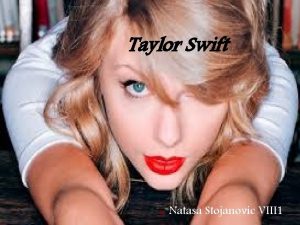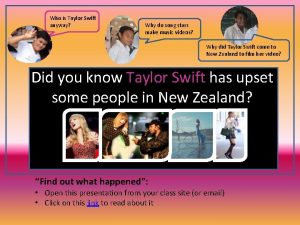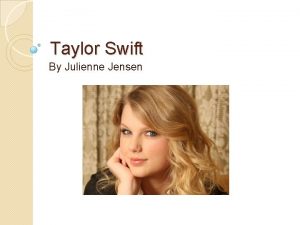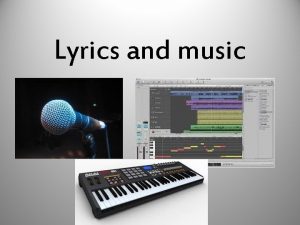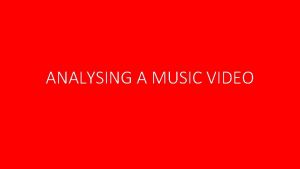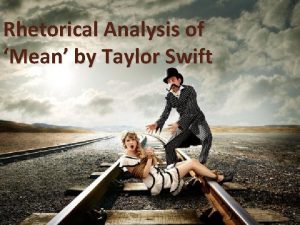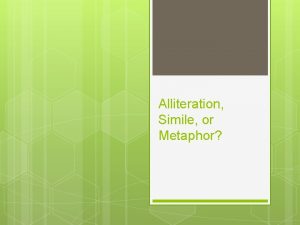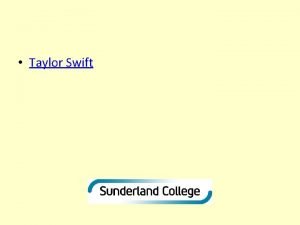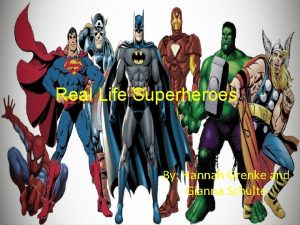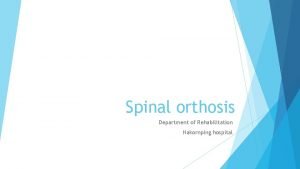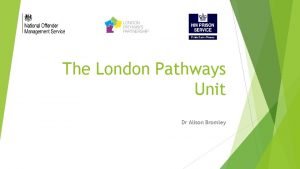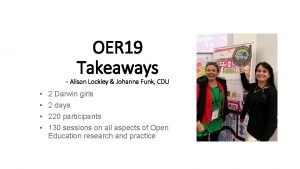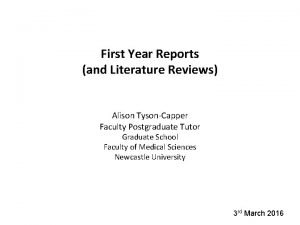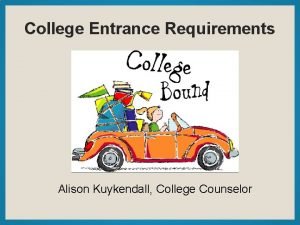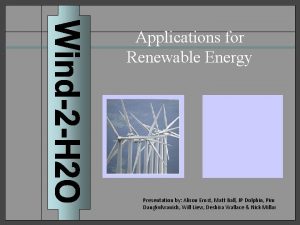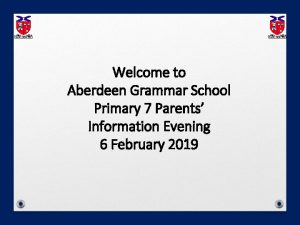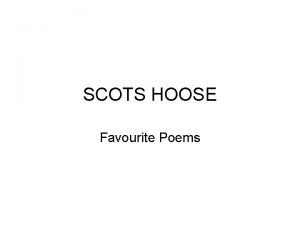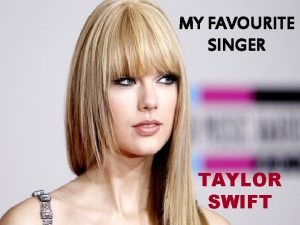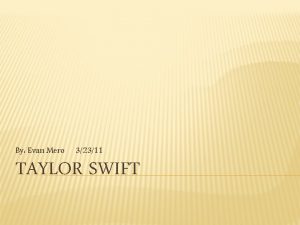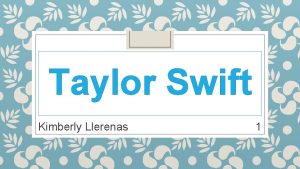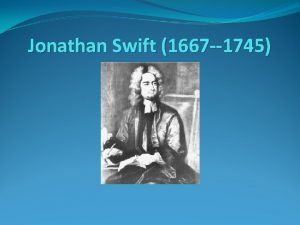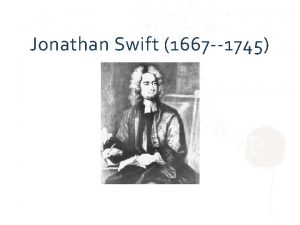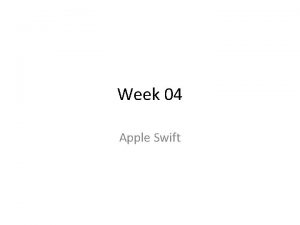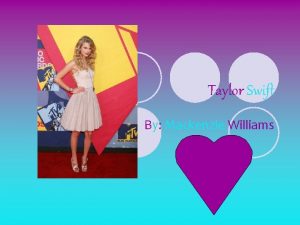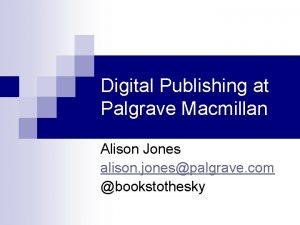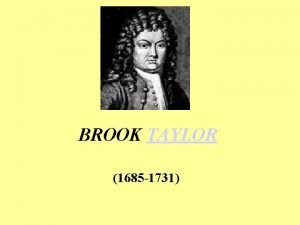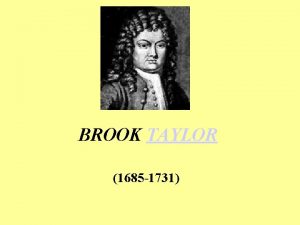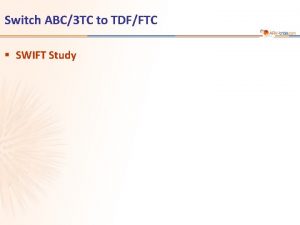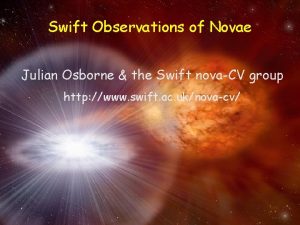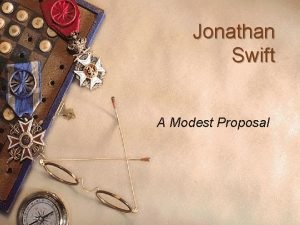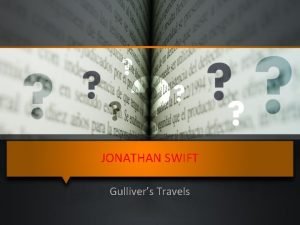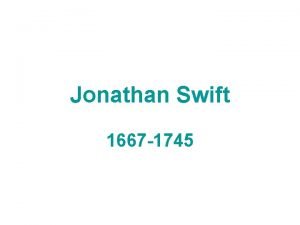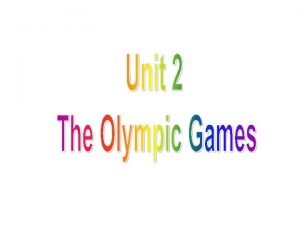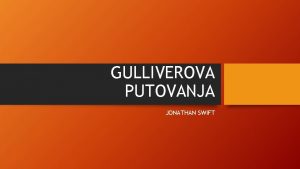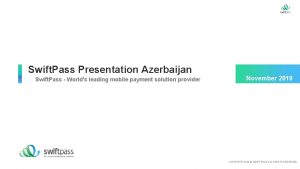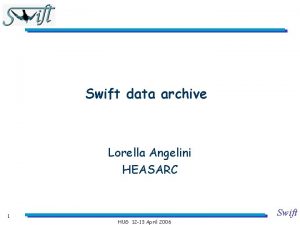TAYLOR SWIFT Early Life Taylor Alison Swift was































- Slides: 31

TAYLOR SWIFT

Early Life � Taylor Alison Swift was born on December 13, 1989 in Reading, Pennsylvania � As a child, she grew up on her family’s Christmas tree farm. � Her grandmother was a professional opera singer and she inspired Taylor to pursue a singing career. � At 12 years old, Taylor taught herself how to play the guitar.

Early Success � The release of her debut album in 2006 brought many successes to Taylor’s career. � She had five consecutive Top Ten singles, a new record for a female solo artist. � Earned multi-platinum status. � Was nominated for the Grammy’s Best New Artist award.

Taylor Swift, Album � Taylor’s first single, “Tim Mc. Graw, ” was released in August 2006 when she was 17 years old. � Her self-titled album, Taylor Swift, drew upon her experiences as a high school student.

Fearless, Album Released in 2008. Taylor became the year’s biggest star of any genre. � Fearless album went gold its first week of release and stayed at the top of both country and pop charts for 11 consecutive weeks. � Taylor became the highest grossing artist of 2008. � At the end of 2009, Fearless sold six million copies in America alone, making it the years best selling album. � �

Speak Now, Album � Speak Now was released in November 2010. � Taylor wrote the entire album herself. � Taylor said: “Track by track, each song is a different confession to a different person. ” � Speak Now sold more than one million copies its first week out to debut at No. 1 on both Billboard’s country and all-genres album charts.

Awards � � � In 2008, won the award for “Female Vocalists of the Year, ” “Favorite Female County Artist” award, and the “Horizon” award. In 2009, won the award for “Video of the Year” and “Female Video of the Year” for “Love Story” at the CMT Music Awards. At the 2009 MTV Music Video Awards, she won the award for “Best Female Video. ” In 2010, Fearless won best “Album of the Year, ” her song “White Horse” claimed best “Female Country Performance” and best “Country Song” at the Grammy’s. In 2012, received the Grammy award for best “Country Solo Performance” and best “Country Song” for “Mean” from her album Speak Now.

Acting � In 2009, Taylor was featured in the movie Hannah Montana: The Movie as her self. � In 2010, she was featured in the movie Valentine’s Day.

Composition History

Unique Facts about Songs � In her lyric booklets for each album, she capitalizes random letters in the printed lyrics of each song. � These capitalized letters spell out “secret” messages, which are usually about who or what inspired the song. � She writes her songs based on personal experiences; especially those that have to do with the men in her life.

“Love Story” � Released in September 2008. � Her inspiration for this song came from the famous play by William Shakespeare’s Romeo and Juliet. � Taylor was inspired by this story, but she didn’t like the ending. She wanted the song to have a happy ending, so she turned the end into a marriage proposal. � “Secret” message: “Someday I’ll Find This. ”

“Mine” � This song was released in August 2010, twelve days before the original release date. � Taylor said this song is about a tendency to run from love, and how this song is about finding someone who would make you believe in love and realize that it could work out. � “Secret” message: “Toby. ”

“Mean” Released in March of 2011. This song is geared toward a critic who said Taylor could not sing, and how she could have killed her career. � These lyrics are meant for that critic: “And I can see you year from now in a bar talking over a football game/With that same big loud opinion, but nobody’s listening/Washed up and ranting about the same old bitter things/Drunk and grumbling on about how I…can’t…sing. ” � “Secret” message: “I thought you got me. ” � �

“Speak Now” is the title track of her third album. Taylor felt that this song was a great metaphor; you can either say what you mean or you can be quiet about it forever. � This song is about a girl crashing a wedding where she believes her former lover is on the verge of marrying the wrong girl. � This song was inspired by one of Taylor’s friends. � “Secret” message: “You always regret what you don’t say. ” � �

Listening Guide “Love Story” 0: 00 Introduction: This song is being played in the major mode. The melody is played by the acoustic guitar, with the piano and electric guitar interwoven together. The harmony in this song is consonance, very pleasing and relaxing. � 0: 15 Verse 1: The acoustic guitar is being played with the interwoven instruments of the piano and electric guitar which are playing the main melody. � 0: 30 The drums make their first introduction into the song by playing on certain beats of the song. The acoustic guitar along with the accompaniment of the piano and electric guitar are still playing the now familiar melody. The cymbals are heard very faintly in the background, playing on certain beats. � 0: 47 The main melody of the acoustic guitar, piano, and electric guitar are still being used. The drums are now playing more regularly which keeps the listener with the beat of the music. �

Listening Guide “Love Story” cont. 1: 03 Chorus 1: The resolution occurs, and the chorus is now played in the major mode. The drums are playing in triple meter. The main melody is still playing in the background, while the violin is playing simple chords. � 1: 20 The acoustic guitar along with the electric guitar and piano have gone back to the original melody. The tempo has slowed to get ready for the second verse. The drums are being played faintly in the background keeping the rhythm going. � 1: 24 Verse 2: The tempo has gone back to the original speed. The original melody is being played, with the drums in triple meter. The electric guitar starts playing longer chords than before. � 1: 40 The drums still give the rhythm, while the acoustic guitar and piano are playing the melody faintly in the background. The tempo slowly increases into a dissonance feel. �

Listening Guide “Love Story” cont. 1: 57 Chorus 2: The chorus resolves the build up from the previous section. The main melody is being played faintly in the background, while the drums are playing in triple meter. The violin plays very quick chords that are repeated throughout the chorus. � 2: 14 Chorus-add on: The music stays the same, with extra lyrics added in. With the addition to the chorus, there is more of a dissonance feeling. � 2: 28 The acoustic guitar and piano are playing, while the violin has taken on a more prominent role. The drums keep the rhythm, while each instrument is playing the melody together. The music slows, and the dynamics of each instrument becomes softer. � 2: 43 Verse 3: The tempo has slowed considerably with the dynamics of each instrument becoming softer. The melody of the acoustic guitar and piano are played faintly in the background where the timbre of the electric guitar is easily heard. �

� � � Listening Guide “Love Story” cont. 3: 01 The acoustic guitar and piano play the melody in a faster tempo leading into the bridge. 3: 09 Bridge: The increased tempo gives the song more of a dissonance feel. The electric guitar and acoustic guitar play together, while their tempo increases. The strum of these two instruments keep the rhythm. 3: 17 Chorus 3: The resolution has now occurred, and the original melody is now being played where the timbre of the violin is heard more. 3: 34 The violin has its solo by playing the beginning melody a little faster. The dynamics of the drums are played faintly in the background to keep the violin with the rhythm of the music. 3: 45 The violin stops playing, but the drums continue on slowly fading with the beat of the music. The main melody is heard faintly in the background. 3: 56 Music Ends.

Listening Guide “Mine” 0: 00 Introduction: This song is played in the major mode and has a feeling of consonance. The drums start out playing to the beat of the music where the electric guitar soon comes in. These two instruments become the main melody of the song. � 0: 18 Verse 1: The drums are the only instrument being played while the singer is singing. The rhythm of this song is easily picked out. � 0: 33 The drums continue playing the main melody. The electric guitar’s timber is very easy to pick out, and you hear the repeated notes played throughout this segment. � 0: 49 Chorus 1: The tempo has become much faster. The drums and electric guitar are playing the main melody. The electric guitar and the drums show a very unique sense of rhythm in the chorus: play a note, pause, then go back to playing. �

Listening Guide “Mine” cont. 1: 09 Verse 2: Tempo has gone back to original. The drums are still playing the melody, and the electric guitar is added into this part. � 1: 23 The drums are playing in the background keeping the rhythm going. The electric guitar has more of a solo which starts to lead into the chorus. � 1: 40 Chorus 2: The tempo increases. They dynamics of the electric guitar are louder so it is heard over the beat of the drums in the background. While the electric guitar is playing, the drums take on a slower tempo for a quick three counts. � 1: 56 Chorus-add on: The tempo and rhythm have stayed the same as the previous chorus. The singer has just added more lyrics into the chorus. �

Listening Guide “Mine” cont. 2: 11 The electric guitar has its solo, and the timbre is very prominent. The tempo stays at the same speed throughout until the bridge. � 2: 19 Bridge: This segment has more of a dissonance feel. The tempo starts out fast, but then it gradually slows. The drums dynamics have become louder to keep the rhythm going, while the electric guitar plays repeated notes. � 2: 50 The tempo slows considerably. The drums and electric guitar are still playing. As the drum and electric guitar play their last note, the vibrations echo and become the music now. � 2: 55 The song goes back to the main melody where the electric guitar and drums are intertwined. The unique rhythm returns here, where the drums play a note, pause, then go back to playing �

Listening Guide “Mine” cont. � � � 3: 04 The tempo and dynamics of the instruments both increase. 3: 11 The drums play the main melody in a faster tempo. The back-up singers are now heard, and are using harmony very well. The only music being played is the drums and the back-up vocalists. 3: 20 Chorus: The drums and the electric guitar go back to playing the main melody. This chorus is different than the previous choruses because the back-up singers are singing more. 3: 39 The drums play their final beats, while the electric guitar continues playing until it smoothly fades out to the soft vibrations of the electric guitar. 3: 52 Music Ends.

Listening Guide “Mean” � � � 0: 00 Introduction: This song is played in the major mode, and starts right into the first verse. The banjo plays the main melody with the accompaniment of the fiddle in certain parts. 0: 24 The banjo still plays the main melody, and the hand clapper makes its introduction. The timbre of the hand clapper is very easy to hear and keeps to the beat of the music. 0: 33 The banjo plays a note, then stops playing. The hand clapper is the only thing being used to keep the beat of the music going. 0: 35 Chorus: The music starts again with the banjo playing the beginning melody at a faster tempo. The hand clapper is being used as the source of rhythm. 0: 57 The banjo stops playing, while the singer sings monophonically ‘Why you gotta be so mean? ’ 0: 59 The music starts again with the banjo playing the melody. The hand clapper comes in shortly after. The violin makes a quick introduction by playing a very quick note that has not been heard until now.

Listening Guide “Mean” cont. � � � 1: 05 Verse 2: The tempo is moderato. The banjo is playing the main melody faintly in the background, and another banjo comes in and starts to pick the strings. This is repeated twice throughout this segment. 1: 20 The violin makes its introduction again by playing alongside the melody of the banjo. The hand clapper is still being used for the rhythm. 1: 28 The tempo slowly increases in speed. The banjo continues playing the main melody while the hand clapper is keeping the rhythm. The dynamics of both instruments are increasing and give a sense of build up. 1: 42 Chorus: The tempo is faster. While the banjo is playing the main melody, the violin is playing as a contrast to the banjo. The violin’s part is repeated throughout the chorus, and the drums have taken over for the hand clapper. 2: 12 The banjo has its solo, where the drums are playing faintly in the background with the hand clapper playing on the beat.

Listening Guide “Mean” cont. � � � 2: 16 Verse 3: The banjo plays the main melody with the drums playing to the beat. The dynamics of the banjo are being played faintly in the background, while certain strings are plucked. 2: 32 The drums take on a slower tempo while the banjo plays the melody faintly in the background. 2: 47 The melody has now returned to the banjo playing the main melody. The hand clapper comes back and keeps the beat going. 2: 51 Bridge: The tempo has become faster, and each of the instruments is going into a crescendo. The banjo is still playing the main melody, while the drums and the hand clapper play together to make the rhythm of the song more pronounced. 3: 03 The music stops, and the singer sings monophonically. The hand clapper is the only thing keeping the music going.

Listening Guide “Mean” cont. 3: 15 The tempo increases. The music returns, and the drums play quick notes that lead into the banjo playing the melody faintly in the background. The violin starts to play more regularly, while the drums keep the rhythm going. This pattern is used throughout this segment with the addition of back up vocals. � 3: 45 The instruments stop playing, and the hand clapper is the only thing being used. The cymbals come in very faintly on certain beats to fade the song out. � 3: 52 The singer sings monophonically for a few beats, while the banjo and cymbals play one last note together. � 3: 59 Music Ends. �

Listening Guide “Speak Now” � � � 0: 00 Introduction: This song is played in the major mode and starts right into the first verse. The acoustic guitar plays the main melody, and has a unique rhythm: strum, pause, strum. 0: 19 The drums come in with a quick beat, while the acoustic guitar is playing the melody with the unique rhythm mentioned above. The electric guitar strums a few chords that are soft in dynamics. 0: 52 Chorus: The chorus is being played with the drums picking out the beat. The electric guitar is being played, while the acoustic guitar is playing the unique rhythm faintly in the background. 1: 06 The music stops as the singer sings monophonically, ‘And they said speak now’. 1: 08 The music starts again. The drums play the pick up note, while the acoustic guitar and electric guitar play the melody.

Listening Guide “Speak Now” cont. 1: 16 Verse 2: The acoustic guitar plays the unique rhythm-strum, pause, strum- and is the main source of rhythm. The electric guitar starts to play alongside with the acoustic guitar. There is also a chime being played faintly in the background. � 1: 48 Chorus: The drums play their quick pick up note, and the tempo increases. The acoustic and electric guitars are playing together while backup vocalists sing alongside the main singer. � 2: 20 The electric guitar has its solo while the drum keeps the beat going. The main singer is singing, and her back-up vocalists echo her words. This repeats two times. � 2: 37 Bridge: The tempo is slower, while the acoustic guitar plays its unique rhythm-strum, pause, and then one last strum. The melody goes into a faster tempo while the drums keep the rhythm going. �

Listening Guide “Speak Now” cont. 2: 53 The acoustic guitar goes back to playing the main melody of the strum, pause, strum technique � 3: 01 The acoustic guitar is still using the same technique as above, and the electric and drums come in playing on certain beats. � 3: 11 The drums have now taken on a faster tempo, and the song takes on a more happy feeling to it. The electric guitar does a quick little solo that leads into the chorus. � 3: 18 Chorus: The drums and the acoustic guitar are playing the melody together which forms the beat. The tempo has gone back to its original speed, where the electric guitar plays faintly in the background. The backup vocalists are heard more throughout this chorus. �

Listening Guide “Speak Now” cont. 3: 38 The melody goes back to the acoustic guitar playing its unique rhythm of strum, pause, strum in a faster tempo. The back-up vocals are still heard, while the electric guitar is being played. � 3: 47 The drums play a quick note, while the acoustic guitar plays its unique rhythm one last time. The electric guitar end the song with a quick strum that fades the song out. � 4: 03 Music Ends. �

Bibliography � � � Biography. com. n. d. February 2012 <http: //www. biography. com/people/taylor-swift 369608>. CMT. n. d. February 2012 <http: //www. cmt. com/artists/az/swift__taylor/bio. jhtml>. Enertainment Weekly. n. d. February 2012 <www. music-mix. ew. com) >. IMDb. 1990 -2012. February 2012 <http: //www. imdb. com/name/nm 2357847/>. Songfacts. com. n. d. February 2012 <http: //www. songfacts. com/detail. php? id=20304>. Songfacts. com. n. d. February 2012 <http: //www. songfacts. com/detail. php? id=13019>. Songfacts. com. n. d. February 2012 <http: //www. songfacts. com/detail. php? id=21219>. Songfacts. com. n. d. February 2012 <http: //www. songfacts. com/detail. php? id=21067>. Washington Post. n. d. February 2012 <www. washingtonpost. com/2012 Grammywinners) >. Yahoo! Music. n. d. February 2012 <http: //music. yahoo. com/blogs/our-country/taylorswift-reveals-song-subjects-in-hidden-messages. html>. Speak Now lyric booklet, 2010 Fearless lyric booklet, 2008
 Natasa stojanovic
Natasa stojanovic Jason lundquist
Jason lundquist Cay ryan murray
Cay ryan murray Who is taylor swift anyway
Who is taylor swift anyway Julienne jensen
Julienne jensen Taylor swift alliteration
Taylor swift alliteration Bad blood intertextuality
Bad blood intertextuality Taylor swift rhetorical analysis
Taylor swift rhetorical analysis Alliteration metaphor simile
Alliteration metaphor simile Taylor swift introduction
Taylor swift introduction The real gianna
The real gianna Early cpr and early defibrillation can: *
Early cpr and early defibrillation can: * Knight spinal orthosis
Knight spinal orthosis Alison voice leeds
Alison voice leeds Alison bromley
Alison bromley Vertical angles
Vertical angles Alison crane
Alison crane Dr alison giles
Dr alison giles Oer
Oer Dr alison tucker
Dr alison tucker Alison bourke
Alison bourke Alison tyson xxx
Alison tyson xxx Alison meek
Alison meek Alison lin nci
Alison lin nci Pest control alison
Pest control alison Alison kuykendall
Alison kuykendall Dr alison landrey
Dr alison landrey Alison hemphill
Alison hemphill Alison ernst
Alison ernst Alison kirkwood
Alison kirkwood Alison murison
Alison murison The crocodile scots poem
The crocodile scots poem
